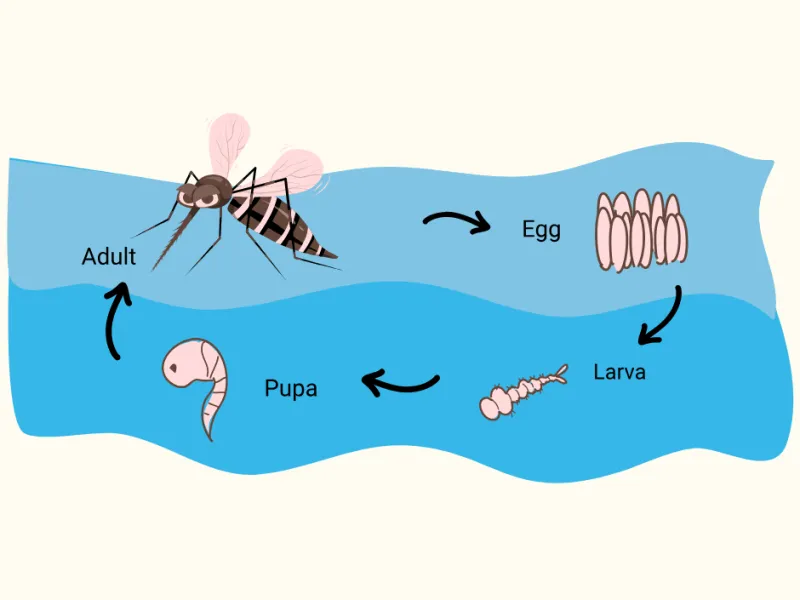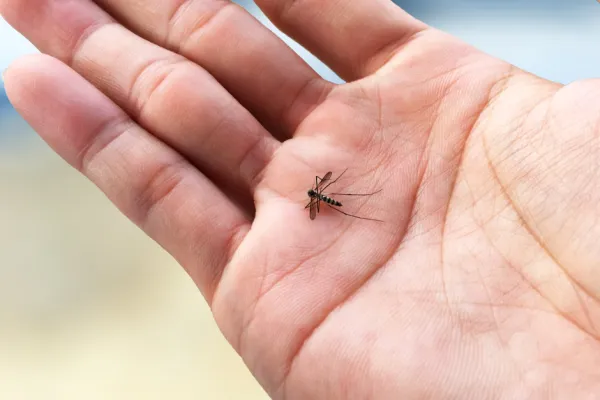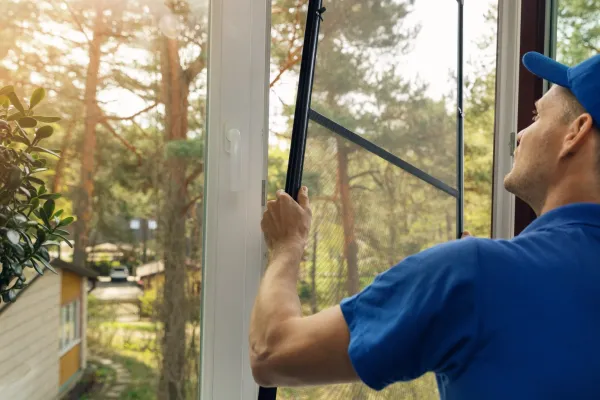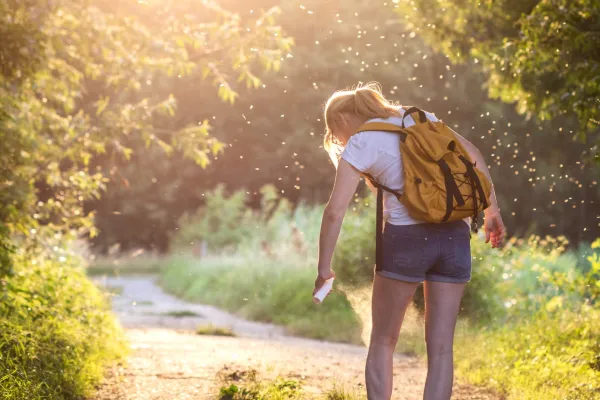The Mosquito Life Cycle

The Mosquito Life Cycle: How Understanding Their Growth Helps You Stop Them
Summers in our area come with sunshine, warm nights—and unfortunately, mosquitoes. If you've ever wondered why they're so hard to control, the answer lies in their complex life cycle. Each stage looks and behaves completely differently, and to eliminate mosquitoes effectively, you need to understand how each one works.
At Mares Exterminating, we believe knowledge is power. That's why we're taking you through the four stages of a mosquito's life, showing where they live, how they grow, and most importantly, how to stop them before they bite.
Stage 1: Egg
Where & How Eggs Are Laid:
Female mosquitoes need water to lay eggs—any still water will do, even something as small as a bottle cap. Different species use different strategies:
Culex mosquitoes lay rafts of eggs (up to 300 at a time) that float directly on the surface of stagnant water—think gutters, ditches, or storm drains.
Aedes species, like the Asian tiger mosquito, lay single eggs just above the waterline inside containers like flowerpots, tires, or buckets. This egg species can wait weeks or even months until it receives the proper moisture before continuing to the next metamorphosis stage.
Egg Survival & Timing:
In warm temperatures around 80°F, eggs can hatch in as little as 24-48 hours
In cooler or dry conditions, eggs may remain dormant, waiting for the next rainfall to trigger hatching
Stage 2: Larva
What They Look Like:
Once hatched, mosquito larvae look like tiny wiggling worms. They're easy to spot, hanging upside-down near the water's surface, using a breathing siphon like a snorkel.
How They Live:
They feed on algae, bacteria, and organic debris floating in the water
Larvae grow through four molts (called instars), growing larger with each stage
Timeframe:
In hot weather, larvae can develop in just 4-5 days
In cooler temperatures, it might take up to two weeks
Vulnerabilities:
The larval stage is one of the best stages for targeted mosquito control. This stage is very sensitive to biological treatments like:
Larvicide oils form a film on the water and suffocate larvae by blocking their air supply
Predators like mosquito fish or certain aquatic insects can also help in ponds or larger water bodies
Stage 3: Pupa - The "Tumbler"
What They Look Like:
Mosquito pupae look like small, curled commas, and they move by flipping or "tumbling" in the water when disturbed—hence their nickname.
Key Traits:
Pupae do not feed, but remain very active, staying near the surface to breathe
This is the last transformation stage before the pupae become adult mosquitoes
Timeframe:
Pupation typically lasts 1-3 days, depending on the water temperature.
Stage 4: Adult - The Flying, Biting, Annoying Stage
Emergence:
The mosquito finally reaches adulthood when the pupal case splits open at the water's surface. The new adult climbs out, rests on the surface or a nearby object, and dries its wings before flying off.
Life as an Adult:
Males live about 3-7 days, feeding on nectar and waiting near breeding sites to mate
Females can live for several weeks, depending on the species and conditions. They require a specific protein from blood to produce eggs. Once the female has had a blood meal, she can lay 100-200 eggs per batch, repeating the cycle multiple times in a lifetime.
Why Adult Control Is Harder:
Once mosquitoes are airborne, they're more mobile and harder to eliminate. In no time, the females are off searching for a blood meal, and the males are ready to reproduce and start the whole process again.
Tips To Break the Mosquito Life Cycle
The most effective way to control mosquitoes is by stopping them before they become biting adults. One of the key steps is to eliminate standing water, which mosquitoes need to lay their eggs.
Drain or refresh water sources—like birdbaths, kiddie pools, and plant saucers—every 5 to 7 days.
Keep gutters clean, toys stored dry, and flowerpots properly drained to reduce hidden breeding grounds.
Trim back shrubs to reduce shaded, cool spots where adult mosquitoes like to rest. Encouraging airflow with fans can make outdoor spaces less hospitable for mosquitoes as they tend to avoid breezy areas.
Professional mosquito control. Mares' proven treatments and expert strategies create a barrier of protection, reducing mosquito populations around your home.
Let Mares Exterminating Help You Stay Bite-Free
Between April and September, our licensed Master Technicians apply mosquito treatments, approximately every 30 days, using a mist blower to target resting areas like shrubs and dense vegetation where mosquitoes tend to hide. In addition to treating these harborage zones, we apply larvicide to breeding sites to interrupt the mosquito life cycle. During each visit, we carefully avoid sensitive areas such as edible plants, koi ponds, and other vulnerable spots.
With Mares Exterminating's mosquito control program, you can reclaim your outdoor space and enjoy a more comfortable, bite-free environment. Contact us to help protect your home and family all season long.



